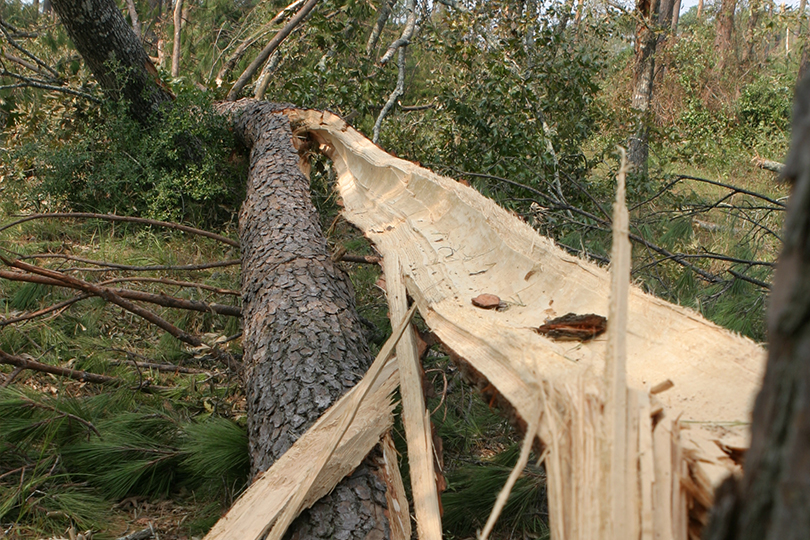By Jennifer Dorsett
Field Editor
With memories of Hurricane Harvey and other recent storms still fresh on their minds, farmers and ranchers along the Texas Gulf Coast braced themselves for Hurricane Laura.
The Category 4 storm was predicted to bring along an “unsurvivable” storm surge as it made landfall along the Texas-Louisiana border, prompting more than half a million people to evacuate the area.
Thankfully, however, damages in Texas were not as bad as predicted, but area residents still prepared for the worst.
Farmers and ranchers in the Jefferson and Orange county area have seen multiple hurricanes, so they know how to prepare,
“Fortunately, we dodged a bullet,” Jim Smith, Jefferson-Orange County Farm Bureau vice president, told the Texas Farm Bureau Radio Network. “They were predicting a large surge of water, so a lot of cattle were moved up out of the low areas because before. With other hurricanes we’ve had, a lot of cattle were lost, but we didn’t have to go through that. We had very little rainfall here, and the winds were not hurricane force. So, we came out in pretty good shape.”
He estimated the area received one to two inches of rain, and winds at his home near Beaumont peaked at 50 miles per hour.
“The only damage that we’ve had over here is a loss of electricity. We were in God’s hands, and He was the one that took care of us,” Smith said.
In neighboring Orange County, rancher Will Winfree said Hurricane Laura started out mostly as high winds and little rain, moving through the area quickly.
“Hurricane Laura came in after midnight and lasted probably about four hours,” Winfree said. “It moved fast, and that was a tremendous blessing because the speed kept us from getting too much rain in any one area. The winds were pretty intense from the north, but overall the damage wasn’t as bad as we expected.”
That doesn’t mean Orange County was unscathed, however.
Many trees were snapped in half, miles of fences are down and homes and barns across the eastern portion of the county were damaged. And many residents, including Winfree, were left without power.
But like Smith, he’s just thankful it wasn’t worse.
“We were very fortunate on our place, very fortunate. Right now, I’ve gotten my families situated. I’m headed into town with generators on the truck, trying to go around to different folks, and if nothing else, get their refrigerators charged back up to keep everything from spoiling until power can get back on,” Winfree said the day after the storm.
From experience, Winfree knew his cattle were on high enough ground to escape flooding, so his preparations mostly involved securing anything likely to blow away, as well as cutting power to windmills and other farm equipment that might receive water damage.
“We’ve gone through this so often that it’s almost, I’m not going to say routine, but it’s not very hard to prepare for it. With all the flooding that we’ve had from Ike, Harvey and Imelda, you know where you can travel and where you can’t. You pretty much have an idea of what you can do,” Winfree said. “You always bring a boat out with you before you leave. If you’re going to evacuate, you have a boat waiting for you when you get back. Yu always have to secure it, so the wind doesn’t blow it away. If you’re going to stay in, you have that boat with you, so you can get in and out and get around. A tractor staged in different areas so you can move around in high water. And hay staged in places where you can, as you learn the high ground, when that water comes up.”
But even if the storm had been worse, Winfree said the area’s farmers and ranchers would clean up, lend a helping hand and keep moving forward. Because that’s just what they do.
“You can’t control the weather and it’s a mindset that you live with and you learn how to deal with it,” Winfree said. “When we can get to them, we’re trying to help others. That’s not just me, that’s everybody in the farming community does that.”

